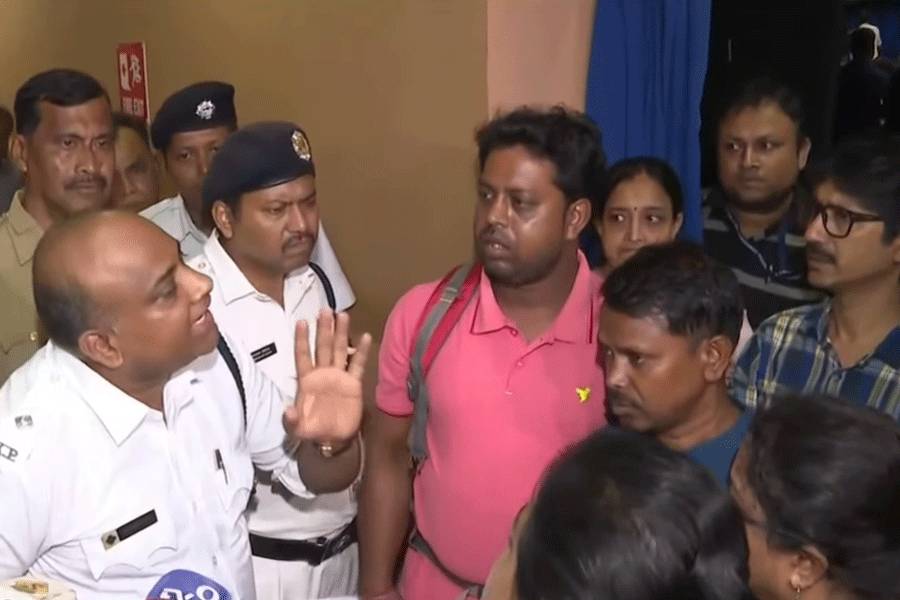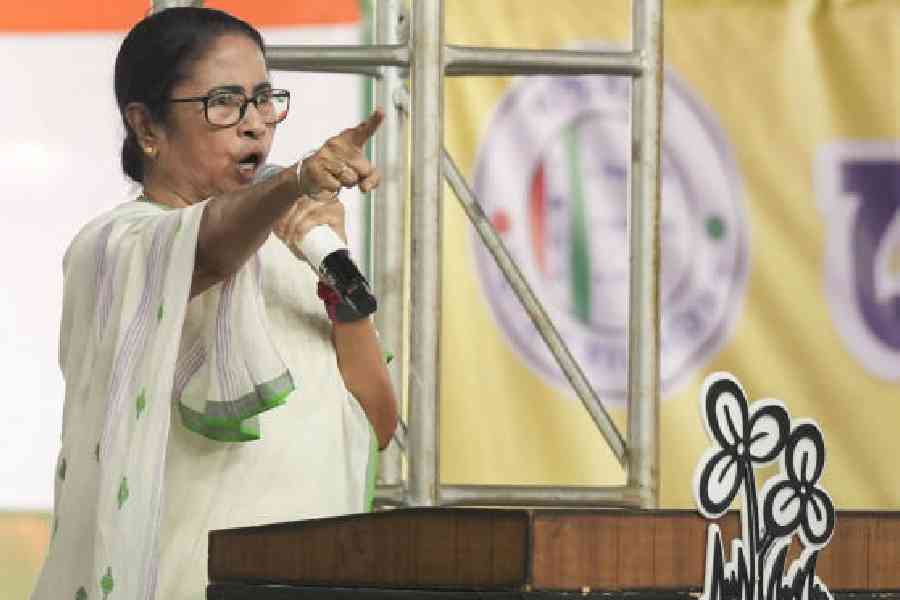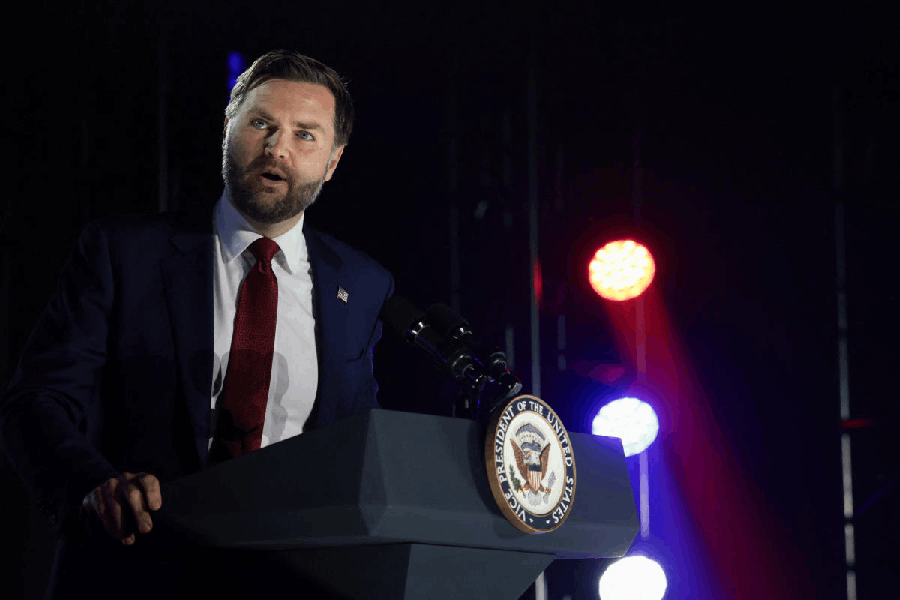|
|
| Champion material |
From the scorching Melbourne summer to the ebullient Parisian spring, from the hallowed lawns of Wimbledon to the unyielding hard courts of Flushing Meadows, Roger Federer might just have earned himself the accolade as the greatest men’s tennis player of all time. On the day of the French Open final, nothing, not a strapping, hard-hitting Swede or even the infuriating bouts of drizzle, was able to prevent him from adding his first trophy at Roland Garros to the five titles at Wimbledon, five at the US Open and three at the Australian Open. By winning his 14th Grand Slam singles title, he tied Pete Sampras’s record and became only the sixth man to win a career Grand Slam, joining Don Budge, Fred Perry, Rod Laver, Roy Emerson and Andre Agassi, all of whom are winners of the four Grand Slams.
Even the interloper in the strange garb of a shirt painted in the colours of the Swiss flag and a misshapen cap could not ruin one of sport’s great lump-in-the-throat moment. Indeed, in the third set, after recovering his lost rhythm from this unsavoury incident, amidst the swirling wind and the light persistent drizzle, Federer slid around to reach the ball with such grace that it was like watching Rudolf Nureyev with a head band performing in the unlikely theatre of Roland Garros.
The draw at the French Open had played out to perfection. Rafael Nadal, his nemesis in the last four editions, had been felled by an overachieving Robin Söderling in the fourth round. Then rain before the final had slowed the courts, enabling him to play some audacious drop shots, which were executed with such perfection that the balls barely bounced after dropping on the other side of the net.
At the end of the match, the score read 6-1, 7-6 (1), 6-4. The only opening Söderling got in the entire match was in the second set tie-breaker. “When there was a chance to make it a match, you saw what he did”, Rod Laver said from his southern California home. “Amazing, the other guy didn’t put his racket on one ball”. Söderling, who by his own admission shuns discourse with many players, paid his respects to Federer during the awards ceremony. “You really gave me a lesson or two on how to play tennis,” he told Federer just prior to the presentation ceremony.
With this triumph, a strong case can now be made for Federer in the inevitable debate over who deserves to be heralded as the greatest tennis player ever. First the numbers. Federer’s record of endurance is astonishing. This was his 38th successive Grand Slam event. He equalled Pete Sampras’s record in his 40th overall, whereas the American had needed 52. On that very night, came a serious endorsement from Los Angeles. Pete Sampras, having watched Federer on television equal his record of 14 Grand Slams, declared: “I think this just further solidifies his place in history as the greatest player that played the game.”
Comparing greatness across tennis eras is complicated because the sport was once divided into amateur and professional circuits, with professionals unable to compete in the Grand Slam tournaments until the beginning of the open era in 1968. Also, top players in the pre-open era did not participate in Grand Slam events with any regularity as they did not fetch them any monetary returns. In the two decades after World War II, many amateur players made their names and quickly turned professional to join tours like those run by the American star, Jack Kramer. The result was that until 1968, very few players had had the opportunity to amass large numbers of Grand Slam single titles, except Australia’s Roy Emerson who remained amateur, but won 12 titles. To cite just two examples, the American player, Pancho Gonzalez, and Lew Hoad of Australia, who both make to many an expert’s list of greatest players, had brief amateur careers. Gonzalez won just two US Open singles titles; Hoad won four major singles titles.
Rod Laver, the Australian left-hander nicknamed Rocket, is often considered the greatest player because he was the only man to complete the Grand Slam twice by winning all four major singles titles in the same calendar year. He did it in 1962 as an amateur and in 1969 as a professional. He won 11 major singles titles in all, but was ineligible to play them as a professional from 1963 to 1967. Many argue that Laver would ultimately have won far more than 14 titles had he been eligible to play Grand Slam events during that five-year period. But the flip side is that he would have faced stiffer competition if other professional stars had also been eligible. Also, three of the four slams were played on grass, his favourite surface.
Even in the professional era, there are problems with such comparisons. The Australian Open was once undervalued and regularly snubbed by leading players because of logistics and its Christmas-holiday time slot. Björn Borg, the five-time Wimbledon and six-time French Open champion, played it only once in 1974, losing in the third round. Jimmy Connors played it twice, winning in 1974.
After the French Open final, Laver, now 70, told BBC Radio 5 Live, that it is impossible to compare players from different eras but “Federer is the greatest player in his era. He’s a great champion and a credit to the game with the way he competes on and off the court.” He is a keen student too. Three years ago, Laver presented Federer the winner’s trophy in Melbourne after career slam No 7. “I shook his hand, gave him the trophy, he went to the microphone and couldn’t get any words out,” said Laver. “Afterward, when we were inside, he gave me a hug and said, ‘I’m sorry, I couldn’t help it.’ But I was touched by how much it meant to him, by how much of a historian he is, how much he knows about the years that I played.” Joining the debate, Ivan Lendl said, “ I’ve been thinking about this for a long time and I think the only conclusion you can reach right now is to split it — Federer in the modern era and Laver from 1968 and back. But if Roger wins the next two or three, well, maybe you give it to him.”
Most tennis experts are continuing to root for Federer to climb higher up the mountain of immortality, ever since he rocketed to the top with his beautiful game and endearing persona. But the debate as to who is the greatest tennis player of all time will go on as it should. With Federer, who is only 27 years old, the most exciting part is that it is an unfinished book. Let us all wait and enjoy the rest of the story.











